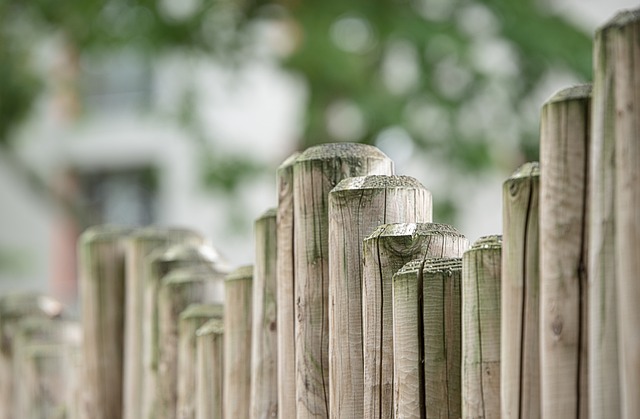For New Bedford, Massachusetts homeowners looking to enhance their outdoor spaces, installing a fence offers both privacy and security. This comprehensive guide navigates the DIY fence installation process, from understanding local regulations to selecting materials that complement your yard’s unique characteristics. By mastering measurement, ground preparation, and step-by-step construction techniques, you can create a durable, aesthetically pleasing fence tailored to your specific needs, all while potentially saving significant costs.
- Understanding Your Fence Options for New Bedford Yards
- Measuring and Planning Your Fence Layout Efficiently
- Preparing the Ground: Essential Steps Before Installation
- Choosing the Right Materials for Durability and Aesthetics
- Step-by-Step Guide: Installing Your New Fence
- Post-Installation Tips for Longevity and Maintenance
Understanding Your Fence Options for New Bedford Yards
When it comes to fencing your New Bedford, Massachusetts yard, there are several options to consider. The first step is evaluating your space and needs. Do you require a tall, privacy fence to shield your property? Or perhaps a modest, decorative fence to delineate your garden beds? Material choices vary as well, from traditional wood that requires regular maintenance to low-maintenance vinyl or durable chain link. Each material comes with its own advantages and considerations regarding aesthetics, longevity, and budget.
Researching local building codes is crucial before beginning any installation project. New Bedford, like many cities, has specific regulations governing fence height, placement, and materials. Understanding these guidelines ensures your project complies with city rules and prevents potential fines or issues down the line.
Measuring and Planning Your Fence Layout Efficiently
When planning your DIY fence installation, efficient measuring and layout are key to a successful project. Start by visualizing where your fence will be placed, considering factors like property lines, existing structures, and any potential obstacles. Create a detailed plan on paper or use digital tools that allow you to draw precise layouts.
Measure the perimeter of the area you wish to enclose accurately. Take note of any changes in elevation or irregular terrain as these may impact your fence route. By doing so, you’ll ensure your fence is straight and level, providing a secure and aesthetically pleasing barrier for your New Bedford property.
Preparing the Ground: Essential Steps Before Installation
Before installing your new fence, preparing the ground is a crucial step. Start by clearing away any debris, such as branches or weeds, that might interfere with the fence’s placement. Use a lawnmower or weeding tools to ensure the area is clean and level.
Next, mark out the perimeter of your desired fence line using stakes and string. This will help you visualize the fence’s layout and make it easier to align the posts correctly. It’s also essential to consider the type of soil you have; compacting the ground around the fence posts can enhance stability and prevent future shifting.
Choosing the Right Materials for Durability and Aesthetics
When planning a DIY fence installation, selecting the appropriate materials is paramount to ensure longevity and aesthetic appeal. New Bedford, Massachusetts homeowners should prioritize durable options that can withstand the region’s climate variations. Wooden fences, for instance, offer a classic look but require regular maintenance to protect against rot and pests. Alternatively, vinyl or composite materials are low-maintenance choices, resistant to fading, cracking, and breaking, making them ideal for all seasons.
Aesthetically, consider the fence’s color, texture, and style that complement your property. Dark colors absorb heat, while lighter shades reflect sunlight, influencing how your fence appears throughout the day. Textured finishes add visual interest, while smooth surfaces offer a contemporary look. The right materials will not only enhance your outdoor space but also increase your home’s curb appeal.
Step-by-Step Guide: Installing Your New Fence
Installing a new fence is an exciting project for any homeowner, and with the right preparation, it can be a rewarding DIY endeavor. Here’s a straightforward step-by-step guide to help New Bedford residents navigate this process. Begin by measuring the perimeter of your desired fence area accurately. Mark out the boundary using stakes and string to ensure a straight line. Next, decide on the type of fence best suited for your needs—wooden, vinyl, or chain-link—and procure the necessary materials, including posts, panels, and any additional accessories.
Dig holes for the fence posts, ensuring they are deep enough (at least one-third of the post’s height) to provide stability. Place the posts in the holes and use concrete to secure them, allowing it to dry completely. After the concrete sets, attach the fence panels or boards to the posts using brackets or nails, following the manufacturer’s instructions for proper spacing. Finally, finish off by adding any decorative elements, like caps on the top of the posts, ensuring your new fence not only enhances your property but also provides the desired privacy and security.
Post-Installation Tips for Longevity and Maintenance
After successfully installing your new fence, there are several tips to ensure its longevity and maintain its appearance. Regular cleaning is essential; use a soft brush or garden hose to remove dirt and debris. Check for any loose or damaged posts, rails, or brackets at least twice a year, especially during extreme weather changes. Tighten or replace any worn-out components to keep the fence sturdy. Apply a fresh coat of paint or sealant every few years to protect against rust and the elements, preserving the fence’s aesthetic appeal and structural integrity. Keep an eye out for any signs of rot or insect damage and address them promptly to prevent further deterioration.
